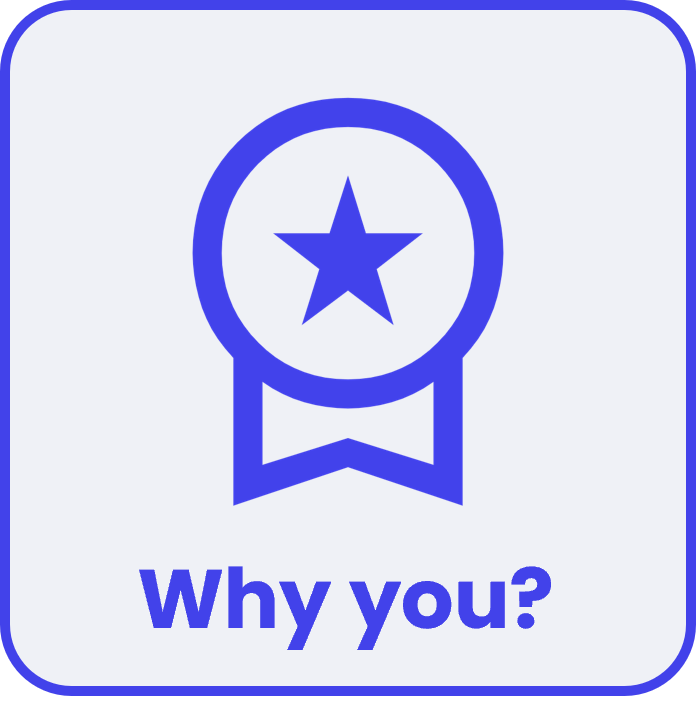You have convinced the panel members that your approach (Why like this?) is going to solve the problem they now care about (Why this? Why Now?). But, why are you the one that should execute the research?
Why you?
Obviously, answers to this question come from your CV. Ideally, the key challenges of the proposal match your competences and experience. Proofs of these are your publications, presentations, awards, grants, etc. Think about technical skills needed to do the work, but also transferrable skills needed for e.g. managing your team and dealing with setbacks. They all showing that you can do this.
But, equally important is your drive. Why do you want to do this? Why do you prefer an academic career over a much better paying and more secure job in industry? Why do you come out of your bed every morning and go to the lab? The first answer that comes to mind, is probably the wish to make the world a better place. The real world inspiration of your research. However, what really helps you to overcome setbacks and deliver what you promise, is your intrinsic curiosity and love for doing research. Genuine enthusiasm is a vital selling point. Why not have fun while you make the world a better place?
A few tips can help to align your personal USPs:
- The STAR method helps to demonstrate a competence (e.g. grit, leadership, flexibility) needed for the project. You talk about a concrete Situation in which you had a Task. You did a certain thing (Action) which had the desired Result.
- Origin stories are often great ways to show how you got to the idea and why you are a good fit. A narrative structure also provides another perspective on the proposed research. Include the moment you found drive, the obstacles you overcame, and the next step on this path.
Job interview
Probably you have been part of a panel interviewing prospect PhD candidates or postdocs. What makes you think a candidate is the right fit? Is it only about cv? What role does the drive a person demonstrates (we call it the academic x-factor) play?
Why here?
As a researcher you are not working in isolation. Without professional support and the right research facilities you are nowhere. You are embedded in an environment that enables you to deliver. This last why question focusses on that. To start close to home: why did you choose the host institute? If you had the choice, where would you choose to go?
While answering this question about your host, think about:
- Unique collections, databases, blood banks, particle accelerators, microscopes, etc.
- People with expertise and knowledge
- The trust the host has in you, and the opportunities for starting/consolidating your own line of research.
You can also answer this question by looking beyond the walls of your host institute. Think about the network you built over the years, the institutes and peers that are willing to open their doors for you, to give you feedback, to do some of the work, to welcome you in their libraries. It is always great to do some namedropping (especially if there are elite institutes in your network). And, if applicable do not forget partners outside academia.
While listing USPs in your network, consider the division of labor. Who does what? What is your contribution, where do you rely on the expertise of others? Ideally it becomes clear who is contributing to each challenge and why they will be able to deliver. Try to find a nice balance between the work you do and what you delegate. In the end, it is your proposal.

